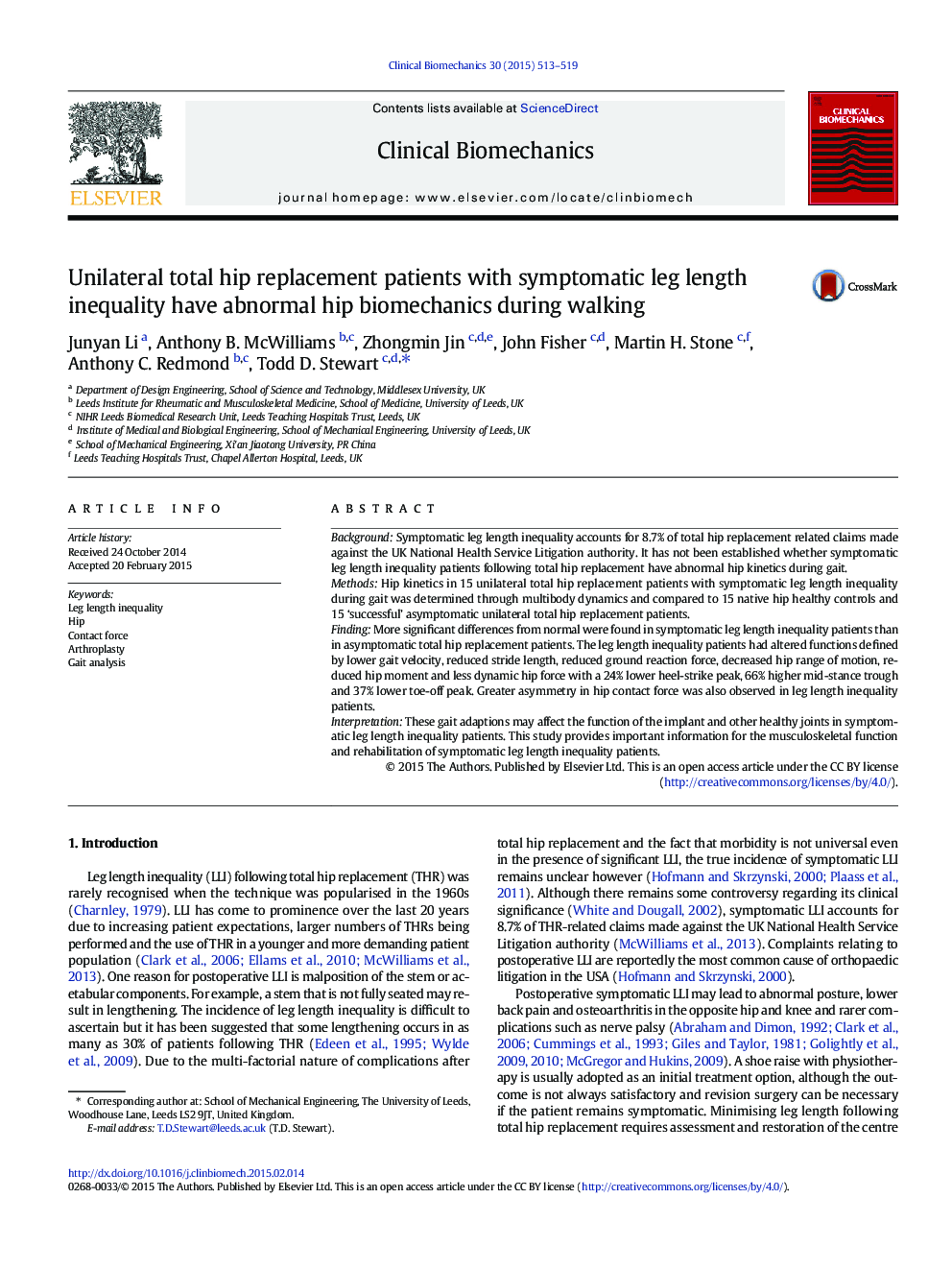| Article ID | Journal | Published Year | Pages | File Type |
|---|---|---|---|---|
| 6204803 | Clinical Biomechanics | 2015 | 7 Pages |
â¢Gait of symptomatic leg length inequality patients after total hip replacementâ¢Symptomatic patients' gait more abnormal than asymptomatic patientsâ¢Gait adaptions may affect function of implant and other healthy joints of patients
BackgroundSymptomatic leg length inequality accounts for 8.7% of total hip replacement related claims made against the UK National Health Service Litigation authority. It has not been established whether symptomatic leg length inequality patients following total hip replacement have abnormal hip kinetics during gait.MethodsHip kinetics in 15 unilateral total hip replacement patients with symptomatic leg length inequality during gait was determined through multibody dynamics and compared to 15 native hip healthy controls and 15 'successful' asymptomatic unilateral total hip replacement patients.FindingMore significant differences from normal were found in symptomatic leg length inequality patients than in asymptomatic total hip replacement patients. The leg length inequality patients had altered functions defined by lower gait velocity, reduced stride length, reduced ground reaction force, decreased hip range of motion, reduced hip moment and less dynamic hip force with a 24% lower heel-strike peak, 66% higher mid-stance trough and 37% lower toe-off peak. Greater asymmetry in hip contact force was also observed in leg length inequality patients.InterpretationThese gait adaptions may affect the function of the implant and other healthy joints in symptomatic leg length inequality patients. This study provides important information for the musculoskeletal function and rehabilitation of symptomatic leg length inequality patients.
